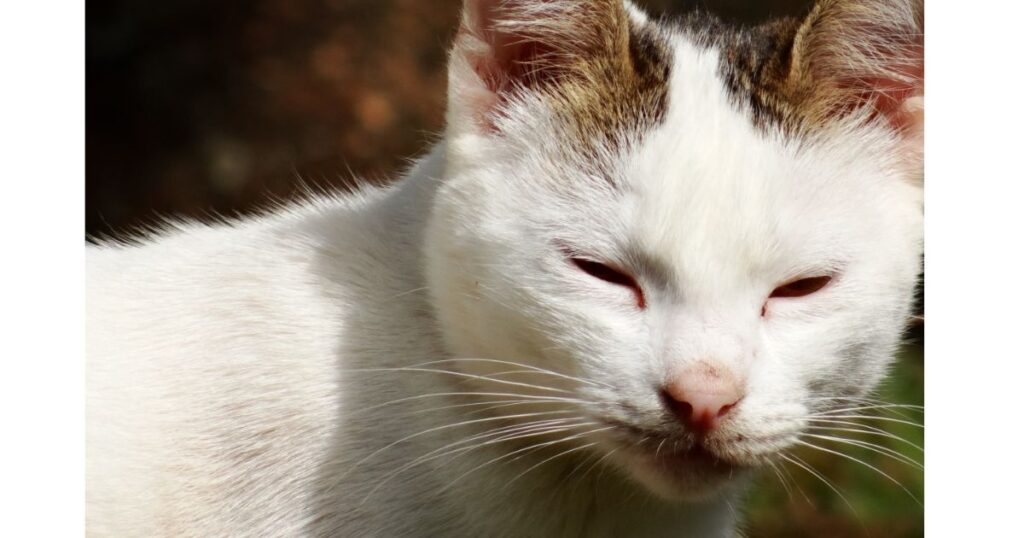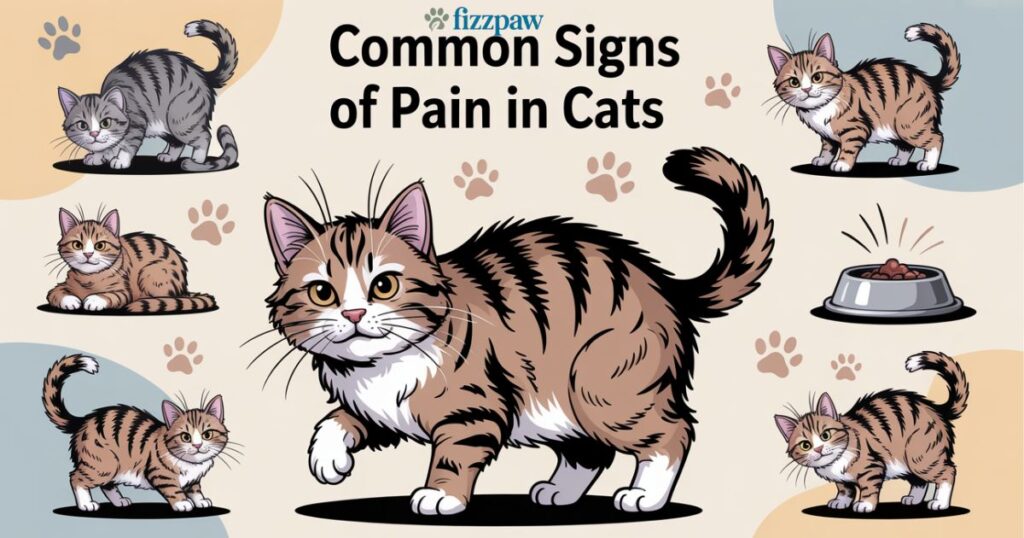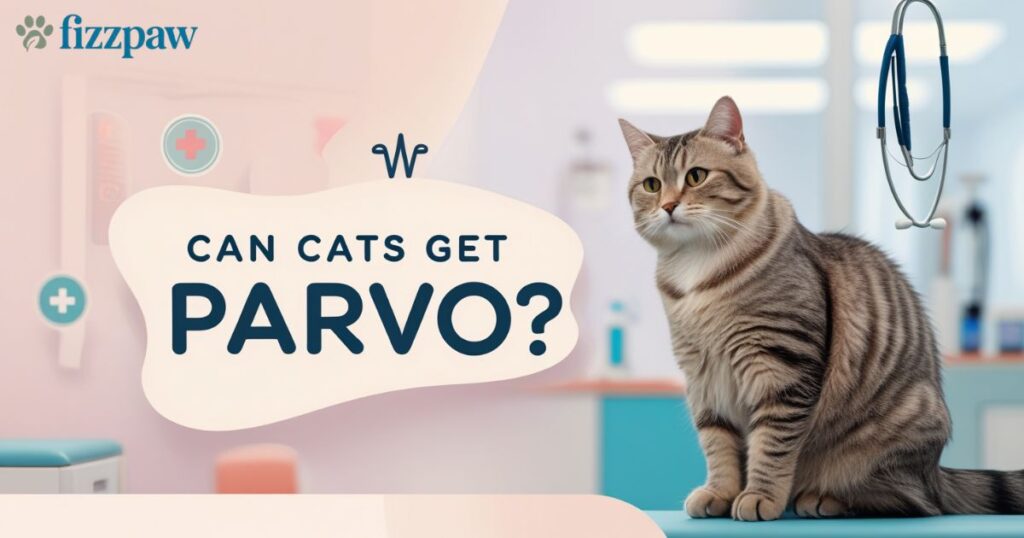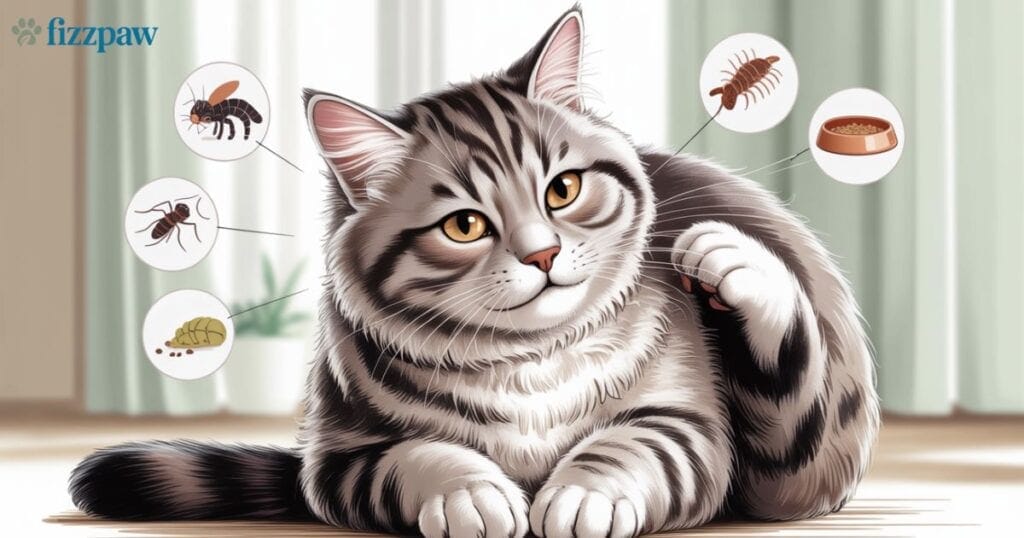When your cat’s eyes are watery and they start sneezing, it might seem like a harmless sniffle—but it could be something more. From mild allergies to serious infections, these symptoms can signal a range of underlying health issues.
Whether your cat suffers from feline eye discharge or indications for an underlying respiratory illness in cats, it’s crucial to know the signs that are normal and not. Knowing the root of the cat’s sneezing could aid in treating it swiftly and avoiding any complications. This guide will help you understand everything from common causes to safe solutions and when to contact the vet.
Is It Normal for Cats to Have Watery Eyes and Sneezing?
The occasional cat with watery eyes or slight sneezing isn’t necessarily an alarm signal. Like humans, cats may react to irritants in the environment, such as dust, pollen, or strong scents such as air fresheners or cleaning sprays. These minor reactions can cause temporary tears or sneezing. They usually go away within a few days or without intervention.
If your cat’s eyes become watery frequently, or when accompanied by sneezing that lasts for more than a week, this could indicate an issue. It could be due to allergies in cat’s eyes, colds in cats, or even infections that resemble the symptoms of feline herpes. In these cases, it isn’t just a nuisance, but could be a sign of an issue that is more significant, for instance, cat conjunctivitis or an upper respiratory infection in cats.
Let’s compare the difference between normal vs. abnormal tearing and sneezing:
| Symptom | Normal (Temporary) | Concerning (Needs Vet) |
| Tearing | Clear, occasional, no redness | Persistent, cloudy/yellow, redness, squinting |
| Sneezing | 1–2 times a day | Frequent sneezing with nasal discharge |
| Appetite & Energy | Normal eating, active | Loss of appetite, lethargy |
| Eye appearance | Clear, moist | Swollen, red, cat’s squinting and watery eyes |
If you observe any worsening symptoms, you need to closely monitor your pet. Be on the lookout for a sticky discharge from the eyes of cats and signs of eye pain in cats, as well as any discharge coming from one eye only in a cat. These are signs that usually need a thorough exam and treatment by your veterinarian.
Symptoms to Watch For (Besides Watery Eyes & Sneezing)
If your cat’s eyes are getting watery and you’re sneezing, this is just the tip of the iceberg. Often, these signs are accompanied by other indicators that help to create a clearer picture of what’s happening. Being aware of these other signs can help you spot serious problems like sinus infections in cats or cat eye infection, as well as feline herpes symptoms, before they become more severe.
Check for these typical warning signs that can be found in the cat’s eyes, breathing, and sneezing:
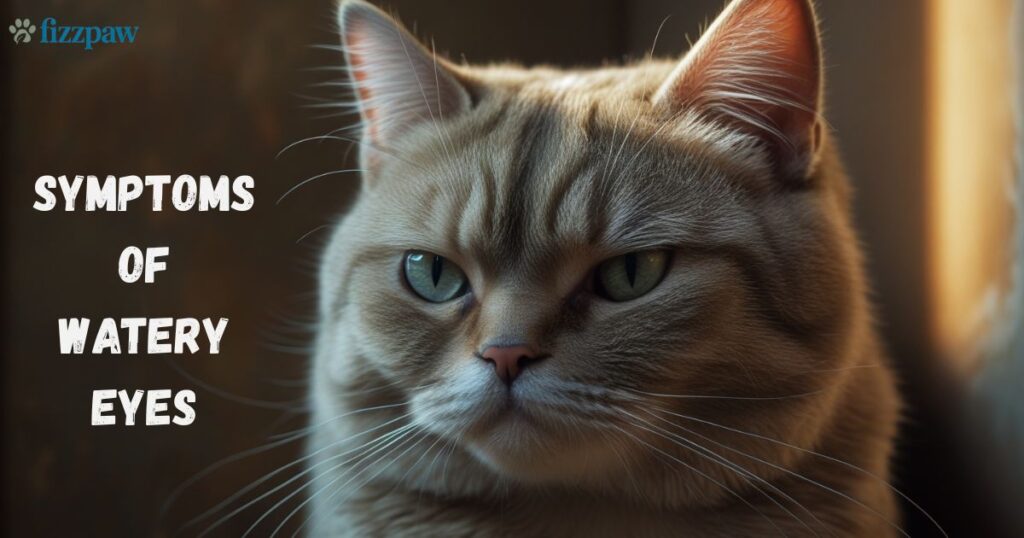
- Eye swelling or redness – The cat’s eyes that appear puffy or red may indicate cat conjunctivitis signs or a tear in the eye of the cat.
- Green or yellow discharge. A thick, coloured discharge is usually a sign of an infection with bacteria or a more advanced cat eye discharge.
- Thermophobia or hiding. In the event that your cat seems more sedentary than usual, this could be related to cold-like symptoms in your cat and the treatment required.
- A lack of appetite or refusing food can indicate a systemic issue. This is usually the case when a cat is suffering from watery eyes and has no appetite.
- Nasal discharge is a sign of a problem, particularly when it’s crusty or thick. This is a significant indication of viral versus bacterial cat infections.
- A wheeze or cough. It could mean that the infection has spread into the respiratory system.
- Blinking or squinting frequently. The Cat is constantly blinking and tears up can indicate discomfort or sensitivity to light because of eye inflammation.
Common Causes When Your Cat’s Eyes Are Watery and Sneezing
According to the American Veterinary Medical Association, upper respiratory infections in cats are among the most common reasons for sneezing and cat’s eye discharge.
Sneezing and watery eyes in cats can be caused by respiratory problems or allergies. These signs may appear to be mild at first. However, they could become more severe if left untreated. Being aware of the most common causes early can ensure your cat’s health and comfort, especially when they’re frequently sneezing, rubbing their face, or tearing excessively.
The most common cases are caused by a virus, which is primarily the feline herpesvirus (FHV-1). The virus can be easily spread, particularly in shelters and multi-cat households. It can cause feline herpes eye symptoms that include teary eyes as well as squinting and sticky eyes. Cats who contract this disease often suffer from flare-ups that are triggered by stress. Another viral disease that is common is calicivirus. This virus can trigger sneezing, runny eyes, or even mouth ulcers.
Let’s break it down further:
| Cause | Signs You’ll Notice | Severity |
| Feline herpesvirus | Sneezing, watery eyes in kittens, squinting, and eye swelling | Moderate to severe |
| Calicivirus | Sneezing, mild discharge, ulcers on the tongue | Mild to moderate |
| Bacterial infections | Frequent sneezing, yellow or sticky eye discharge, and squinting in cats may indicate an underlying issue. | Moderate to severe |
| Environmental allergies | Clear discharge, cat keeps blinking, seasonal flare-ups | Mild to moderate |
| Dry indoor air or irritants | Watery eyes, cat rubbing face, mild sneezing | Mild |
In some instances, the symptoms of a cat’s cold and treatment begin with discharge from the eyes, and then eventually lead to vomiting and a loss of appetite. Be aware that cat eye infections may not appear like the same. Certain types show up as discharge or redness from just one eye, and some cause both eyes to become swollen and leak.
Less Common But Serious Causes
Ailments that are serious can cause eye watering and sneezing, including eye ulcers and glaucoma. Eye ulcers in cats often cause squinting and increased sensitivity to light. They require urgent veterinary attention. Dental infections or tumors may also cause swelling and discharge from the eyes.
Bacterial infections can accompany viral infections, causing eyes that are thick and yellow. The distinction between a bacterial and viral problem is essential because bacterial infections typically require antibiotic therapy. The persistent watery eyes could be due to obstructions in the tear ducts, particularly in breeds with a tendency to tear staining, such as Persians.
“Though rare, serious viral infections like feline parvovirus can also cause symptoms that affect your cat’s eyes, immune system, and appetite.
When to Be Concerned (Red Flags to See a Vet)
Consult a veterinarian when your cat is suffering from yellow eyes, swollen eyes, or appears to be suffering. Other indicators of pain in the eyes in cats are constant blinking, eye pawing, or the inability to open their eyes. If your cat isn’t eating or is exhibiting lethargy, with eyes that are watery or sneezing, urgent vet treatment is essential.
If symptoms last for more than 48-72 hours, a worsening discharge, or severe breathing problems are present. If you notice discharge from just one eye (discharge from just one eye of a cat), is it a sign of an injury or infection that needs medical attention? Regular visits to the vet can prevent problems and help protect your cat’s eyesight.
Home Remedies for Mild Symptoms
If you are experiencing mild symptoms, use gentle home remedies. Utilize a dry, clean cloth or sterile solution of saline to clean the eye of felines gently. Avoid harsh chemicals and drops for human eyes. Enhancing the quality of air by using humidifiers or eliminating allergens and dust can help reduce irritation.
If your cat seems uncomfortable but doesn’t have serious symptoms, try natural pain relief for cats to ease discomfort while monitoring for changes.
Additionally, feeding your cat healthy food can boost their immunity. Relaxation and a peaceful environment can help to clear minor illnesses. Make sure to observe any signs of deterioration because home remedies work best for mild watery eyes and colds.
Safe Home Care Checklist for Mild Symptoms:
| What To Do | Why It Helps |
| Use a humidifier or a steamy bathroom | Eases breathing and opens the nasal passages |
| Gently clean eye discharge | Prevents crust buildup and the spread of infection |
| Offer warm, smelly food or chicken broth | Keeps them nourished if their appetite is low |
| Minimize stress and stay indoors | Reduces symptom flare-ups (especially in herpes cases) |
| Ask a vet about lysine supplements | It may help cats with recurring feline eye discharge |
Warning for what NOT to use (e.g., human eye drops):
Don’t apply eye drops for humans or other medications for your cat unless it is prescribed by a veterinarian. A lot of them contain harmful ingredients for cats. For instance, Visine and other red-eye drops contain ingredients that could harm the eyes of your cat. Always seek advice from a vet on eye problems for your cat prior to trying any treatments. Just like you should avoid using human shampoo on cats, it’s also dangerous to use human eye drops or medications on them. Never use over-the-counter human medications on cats unless your vet advises. The FDA warns that many human drugs can be toxic to pets
Certain home remedies, such as essential oils, may also be harmful. The wrong choice of product could increase symptoms or trigger new issues. If in doubt, visiting a vet is safer and more efficient.
How I Treated My Cat’s Watery Eyes at Home (Personal Story)
My cat began to exhibit watery eyes and cat squinting. I noticed that it was raining quite often. I gently cleansed her eyes with saline and kept her in a room free of dust. Warm compresses helped decrease swelling. The room also had a higher humidity, which helped ease her coughing.
In a short time, her eyes became more watery and her sneezing decreased. However, when her discharge turned yellow, I took her to the veterinarian immediately. The veterinarian recommended cat eye drops to treat infections, which cleared the issue quickly. This taught me how crucial it is to monitor the symptoms carefully and seek out professional assistance as required.
When a Vet Visit Is Necessary
A visit to the veterinarian is essential if your cat is suffering from persistent eye watering or sneezing that isn’t getting better after 2 days. In addition, extreme symptoms like yellow discharge, swollen eyes, or signs of cat sinus infections need urgent medical attention. In case your cat’s suffering from discomfort or has difficulty breathing, don’t delay in getting it checked out.
Veterinarians are able to diagnose problems such as cat conjunctivitis and bacterial infections with precision. The early treatment can prevent the condition from getting worse and complications such as loss of vision. If you’re wondering, “why is my cat sneezing and eyes watering?” A vet is the best source.
Quick Signs to See a Vet:
| Symptom | Reason to See Vet |
| Yellow or green eye discharge | Possible bacterial infection |
| Swollen or painful eyes | Could indicate ulcers or injury |
| Discharge from one eye only | Possible localized infection or injury |
| Loss of appetite or lethargy | Signs of systemic illness |
| Persistent sneezing & watery eyes >3 days | It could be a serious infection. |
How Vets Diagnose and Treat Eye and Nose Issues in Cats
Vets utilize tests such as fluorescein dye to look for ulcers, and also take swabs to detect the presence of infections. They differentiate between viral and an infection caused by bacteria to recommend the correct medication. Treatment typically includes antiviral and antibiotic drops for cat eye inflammation and support.
Sometimes, oral medications or injections may be required. If you have allergies, your vet may prescribe antihistamines or even changes to the environment. Regular check-ups will ensure that your cat is fully recovered and is comfortable.
Once diagnosed, treatment is tailored to the specific condition:
- Antibiotic eye drops or antivirals for cat conjunctivitis symptoms or tears in the cat’s eye caused by viruses or bacteria.
- Oral medication. If your cat suffers from an extreme upper respiratory tract infection in cats, a systemic medication could be necessary.
- Anti-inflammatory drops: They ease the discomfort and swelling caused by cat allergies to the eyes, or a mild pink eye treatment for felines.
- Saline rinses: Gentle, sterile rinses assist in removing debris and reduce irritation caused by cat squinting or watery eyes.
Can You Prevent This in the Future?
Prevention begins by making sure your cat’s surroundings are clean and free of smoke, dust, and other strong chemicals. Regular grooming can reduce irritation to the eyes, especially those breeds with a tendency to tear staining in cats. Vaccinations guard against the spread of viruses that cause pink eye problems in felines.
Supplements and diet can help boost immunity. Additionally, keep an eye on your cat for early indications of symptoms associated with colds in cats, and get treatment fast. Beware of exposure to sick cats to decrease the chance of contracting an infection.
Certain breeds, especially those with long fur, are more prone to tear staining and eye problems. You can refer to our cat hair length chart to understand your cat’s grooming needs and risks better.
FAQs
Q1: What can I give my cat for sneezing and watery eyes?
Mild eyes can be soothed by the use of a moist, warm cloth to wash the eyes. You can also use a veterinarian-approved drop for cats to treat infection. Do not use human medicines without consulting a veterinarian.
Q2: Why is my cat sneezing and has one watery eye?
It could be a indication that there is an infection of the upper respiratory tract in a cat, eyes with cat allergies or even an object that is foreign in one eye. A check with a vet can rule out the possibility of serious causes.
Q3: When should I be worried about my cat’s watery eyes?
If the symptoms persist for more than 2 days, get worse, or you notice eyes swelling, yellow eye discharge or loss of appetite, seek immediate veterinary attention.
Q4: How can I treat my cat’s watery eyes at home?
Make use of a soft, moist cloth that has been soaked in saline to cleanse the discharge. Make sure your eyes are dry and make sure your cat is comfortable and hydrated. For mild colds and flu, home remedies for cat colds can aid.
Q5: How to naturally treat a cat eye infection?
Cleanse the eye gently using the eye with sterile saline every day. Make use of chamomile tea bags for compresses (cooled) as well as to increase immunity by taking lysine supplements approved by your vet. Always consult your vet first.
Final Thoughts: What to Do If Your Cat’s Eyes Are Watery and Sneezing
In the event that your cat’s eyes are dripping and you’re sneezing at them, be at a safe distance, but be sure to watch closely. The mild symptoms usually improve with home treatment. However, signs that become more severe indicate that it’s time to schedule an appointment with a veterinarian. The early diagnosis and treatment will keep your cat in good health and content.
Keep in mind that excessive tears in cats, as well as sneezing, are not only annoyances, but they could point to health problems that can be treated. With the right treatment, your cat will return to glowing eyes and smiling purrs in a short time.

